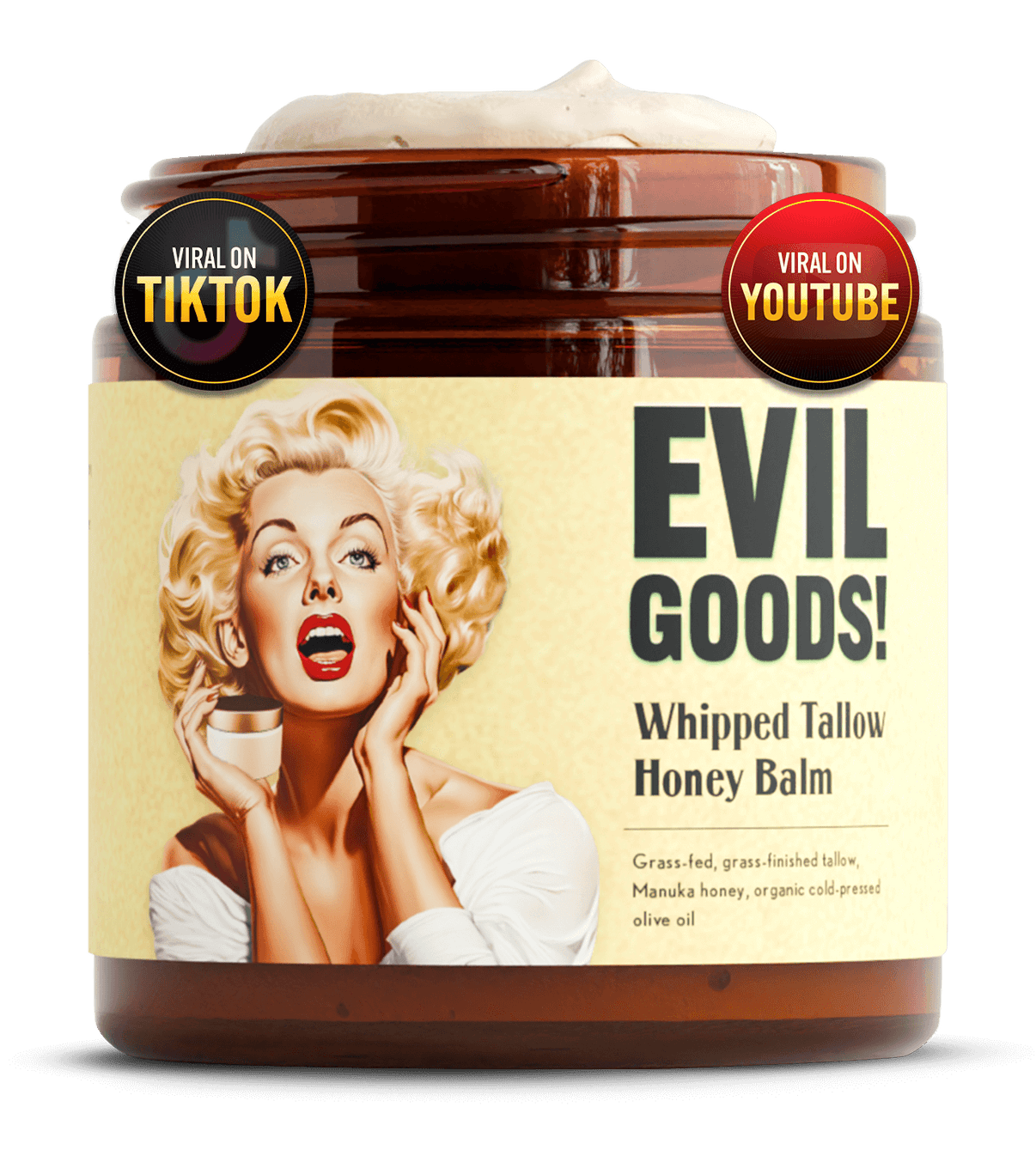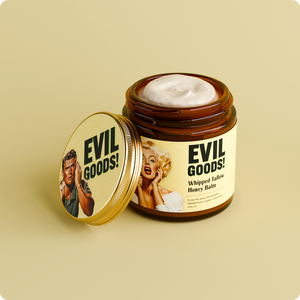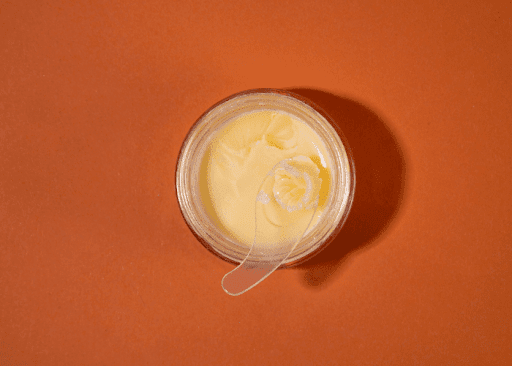Beef tallow is one of those products we’ve been using since ancient civilization. It was the primary cooking fat for several decades until the discovery of vegetable oils. Tallow has gained popularity again because of its higher smoke point, which makes it suitable when cooking at high temperatures. More importantly, it’s also an ideal component in most skincare products and has become a universally loved ingredient because of its skin benefits.
Nevertheless, beef tallow has a limited shelf life when it’s not stored properly. When you store it correctly, it can last up to one year at room temperature, 12 to 24 months in the refrigerator, and 2 to 3 years in the freezer. In this guide, we have some of the best tested and proven storage tips for storing beef tallow and preventing spoilage.
What is Beef Tallow?
Beef tallow is made by rendering beef fat from suet or around kidneys and meat. It’s more saturated and has a higher smoke point (400°F or 204°C) than lard or bacon grease, making it a good choice for frying, roasting, and sautéing.
Beef tallow doesn’t break down during high temperatures (like vegetable oil) or release toxic materials. It’s rich in vitamin A, D, E, and K, and has antimicrobial and anti-inflammatory properties, which add to its food and skin properties. Yes – beef tallow is great for skincare!

Factors That Decrease the Shelf Life of Beef Tallow
1. Temperature
How you store beef tallow is mostly dependent on temperature. Even though rendered beef tallow stays in a stable condition when fresh, it may become rancid when preserved in places with high or changing temperatures.
Homemade tallow left sitting out at room temperature degrades considerably compared to when it’s cooled and stored. A study by Flavia et al. (2014) found that tallow stored in refrigeration conditions (~+2 °C) didn’t lose chemical stability until 150 days, while frozen beef tallow at –18 °C elongated the storage duration to more than 210 days.
On the other hand, the introduction of moderate heat (25°C–60°C) promoted the increase of the peroxide content, an early indicator of rancidity (Ahn et al., 2008). Saturated fats in rendered animal fats are more easily preserved when properly stored in constant and cold temperatures that slow down the oxidation process. When you place your tallow close to ovens or other sources of heat, it will start to spoil after three or four months instead of lasting for about a year.
2. Oxidation
All cooking fats, including beef tallow, are prone to oxidation. The chemical reaction with oxygen causes the breakdown of fatty acids into hydroperoxides, aldehydes, and ketones that have unpleasant odors and destroy nutritional value (Domínguez et al., 2019).
This degradation occurs even in cold temperatures, especially if the fat is exposed to air. Improperly stored tallow will oxidize and spoil quickly, developing an off flavor that's not ideal for high-heat applications like deep frying. Oxidized tallow also loses its nutritional benefits, making it less desirable as a cooking fat or skincare product.
3. Moisture Contamination
Beef tallow is naturally water-repellent, but water contamination during storage leads to deleterious effects. Water favors the development of mold, yeast, bacteria, and enzymes responsible for hydrolytic rancidity, which decomposes animal fat into free fatty acids. This is what gives the tallow a sour, soapy taste and a greasy texture.
Flavia et al. (2014) established that tallow stored at +2°C had a dramatic increase in acidity after just 150 days when exposed to moisture. Failing to seal your container tightly can decrease the shelf life of your tallow to under six months. Always use dry utensils, like a butter knife, and stay away from sinks or steam-prone areas to maintain an even, dry environment.
4. Light Exposure
Sunlight and UV rays degrade rendered beef fat through a chemical reaction known as photooxidation. This leads to the decomposition of fat-soluble vitamins A, D, E, and K and encourages rancidity, even in sealed containers.
Tallow stored near windows or light sources will spoil faster, even if you’re using an airtight container for storage. Store your tallow in a dark-colored or opaque container and place it in a dark area to preserve the nutritional content of the beef tallow.
5. Quality of Beef Tallow
Tallow produced from high-quality grass-fed beef is richer in natural antioxidants like α-tocopherol that combat oxidation. You should procure fresh and high-quality beef tallow for a longer shelf life and resistance to degradation.

Best Practices for Beef Tallow Storage
Use an Airtight Container
The golden rule of beef tallow storage is to always use an airtight container. Exposing your tallow to oxygen leads to oxidation, which causes your cooking fat to degrade, lose its nutritional punch, and smell terrible.
Best storage container options:
- Mason jars with tight lids
- Glass jars with silicone seals
- Stainless steel containers with locking lids
These are easy to clean, food grade, and protect your tallow from moisture contamination and air. Avoid plastic since it leaches harmful chemicals into your fat over time.
Store in a Dark Place
UV rays from direct sunlight accelerate the oxidation process, breaking down fatty acids and causing bacterial growth. That’s why every beef tallow jar should live in a dark place. Out of the light means out of trouble.
Best locations for dark environment storage:
- Pantry cabinet
- Kitchen drawer
- Cool cupboard far from the stove or oven
A dark location keeps your beef tallow fresh by avoiding constant exposure to heat and light.
Freeze Beef Tallow for Long-Term Storage
Freezing tallow locks in its nutrients and extends its shelf life to 12+ months. Once melted and cooled, pour it into:
- Freezer-safe bags (squeeze out the air)
- Ice cube trays for small portions
- Glass containers with headspace (leave room for expansion)
Always label your long-term storage containers with dates, and never microwave frozen tallow; it messes with the structure of the rendered fat and can cause splattering.
Proper Storage at Room Temperature
Room temperature storage works if you’re using your tallow regularly and it’s in the right conditions.
Use this checklist for proper room temperature storage:
- Stored in a dark environment
- Inside an airtight container
- Out of direct sunlight
- In a low-humidity area
This method is ideal for daily cooking, greasing pans, or skincare use. Just scoop what you need with a butter knife, and keep the lid tight after every use.
Avoid Common Mistakes That Spoil Beef Tallow
Even if you have good intentions, the following common mistakes can destroy your beef tallow:
- Storing tallow in open containers: Always use an airtight container. No exceptions!
- Leaving it near the stove: Heat causes fat to break down and spoil. Store away from heat sources.
- Using plastic containers: Plastic breaks down and contaminates your animal fat. Stick to glass jars or stainless steel containers.
- Reusing deep-frying oil without straining: Filter out food particles every time to avoid mold, bacteria, or odd flavors.
- Confusing tallow with bacon fat, pork fat, or lard: Each fat behaves differently. Only apply tallow storage rules to actual beef tallow.
Beef Tallow in Skincare
Beef tallow is gaining popularity in the skincare world, and for good reason. We’ve been using this rich, natural fat for centuries to soothe, nourish, moisturize, and protect the skin. As modern skincare shifts toward natural alternatives, beef tallow is making a powerful comeback.

Benefits of Beef Tallow for the Skin
Beef tallow deeply moisturizes the skin. It closely resembles the structure of our skin's natural oils, making it effective for dry, irritated, or sensitive skin types. Tallow made from grass-fed beef is rich in fat-soluble vitamins (namely A, D, E, and K) and has anti-inflammatory and antimicrobial qualities that address conditions like eczema, acne, and redness.
Unlike synthetic creams that rely on petroleum derivatives, beef tallow is a clean, food-grade, non-toxic option, ideal for soap making and salves. Its high concentration of saturated fats gives it a luxurious, balmy texture that melts effortlessly into the skin, restoring elasticity and softness without clogging pores.
Shop our beef tallow skin products to experience the full magic.
Why Storage Still Matters in Skincare Products
Beef tallow storage is important to the quality of the product and shelf life, even when you’re applying it topically. Tallow can oxidize or develop an odor, especially in warm, humid environments. Poor storage conditions influence the texture, color, and nutrient profile of your skincare formula and reduce its efficacy with time.
Store skincare products made using beef tallow in airtight or sealed containers, preferably in a dark place, free of direct sunlight and changes in temperature. This prevents spoilage and helps make sure your balm or cream has skin-loving properties until the last scoop.
FAQs
Is Beef Tallow Supposed to Be Refrigerated?
Refrigeration of beef tallow is not necessary, but it extends its shelf life. If you use it all the time, keeping the beef tallow at room temperature in a closed container and in a dark place is fine. For long-term preservation, we recommend refrigeration or freezing to preserve it from spoilage.
How Long Can You Store Beef Tallow?
If you store it properly, beef tallow lasts one year at room temperature and longer if refrigerated or frozen. To achieve maximum beef tallow storage life, store it away from light, seal it tightly, and keep it in the cold.
Is Beef Tallow Actually Healthy?
Yes, beef tallow is a concentrated animal fat high in saturated fatty acids and fat-soluble vitamins A, D, E, and K. Unlike highly processed cooking oils, tallow is natural, stable, and free of toxins, especially when made from grass-fed animals.
Is Beef Tallow Healthier than Vegetable Oil?
Absolutely. Unlike vegetable oil, which is typically chemically processed and inflammatory, tallow remains stable even when intensely heated due to its high smoke point. Grass-fed beef tallow is hormone-supportive, seed oil-free, and less prone to becoming oxidized when cooking or deep frying.
How Do You Use Beef Tallow for Skin?
Apply a pea-sized amount to clean, dry skin for intense moisturizing. It absorbs fast, delivers vitamins and fatty acids, and won't clog your pores.
How Do You Render and Store Beef Tallow?
You render beef tallow by melting trimmed beef fat over low heat, then straining out solids with a fine mesh or cheesecloth. Cool and store the tallow in a glass jar, mason jar, or stainless-steel container, and keep it in a dark place. Also, use the freezer or refrigerator in freezer-safe containers or bags for long-term storage.
What’s the Difference Between Lard and Tallow?
Lard is made from pork fat, while tallow is made from beef fat. Tallow also has a higher melting point, making it ideal for high-heat cooking and stable to incorporate in skincare. Lard is softer and is most commonly used for baking, while tallow is used in soap making, deep frying, and moisturizers.
Does Beef Tallow Reduce Wrinkles?
Yes. Tallow's profile of saturated fats, fatty acids, and vitamins stimulates collagen production and locks in moisture. Daily use may reduce fine wrinkles and lines, especially when you use natural products intended for deep repair and skin rejuvenation.

Final Thoughts on Storing Your Beef Tallow Products
The answer to the question of how to store beef tallow properly is simple: keep it away from heat, light, water, and air. If you store your tallow properly, it will last longer and become more effective in cooking and skin care.
Here's a quick rundown of the essentials:
- Store in a sealed container to prevent oxidation.
- Store in a dark place, away from direct light and UV rays.
- Store frozen beef tallow in freezer-safe bags for long-term storage.
- Avoid plastic. Choose glass jars or stainless steel containers.
- Learn the signs of spoilage and don’t take shortcuts.
At Evil Goods, we're the masters of tallow storage. We strictly avoid oxidation by using grass-fed, high-quality beef tallow and proper storage mechanisms. This makes our organic multipurpose balm deeply nourishing to the face, body, and lips.
Our skincare products feel like luxury and are made with real ingredients for real results; expect zero toxins and zero bullsh*t. Explore the Evil Goods beef tallow skincare collection to enjoy tallow-based products rendered with care, just like your skin deserves.
References
- Ahn, D. U., Kim, S. J., & Jo, C. (2008). Oxidative stability and quality characteristics of duck, chicken, swine and bovine skin fats extracted by pressurized hot water extraction. Korean Journal for Food Science of Animal Resources, 28(3), 446–453.
- Domínguez, R., Pateiro, M., Gagaoua, M., Barba, F. J., & Lorenzo, J. M. (2019). A comprehensive review on lipid oxidation in meat and meat products. Antioxidants, 8(10), 429.
- Flavia, D. C., Zorica, L., & Delia, S. (2014). Effects of temperature and storage time on the quality of alimentary animal fats. International Food Research Journal, 21(4), 628-632.

Dr. Elena Dinkollari
MD, Dermatologist & Endocrinology Assistant
Doctor Approved








